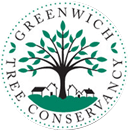To the Editor:
The Greenwich Tree Conservancy agrees with the recommendations given recently in several letters to the editor. Underground wiring should begin without further delay on major town roads, near substations and for all new construction. The long term cost over the many years this will take, will be far less than the cost of the current archaic system when business and property losses are taken into account.
We believe that severe and destructive “100 year” storms may be coming with more frequency and power lines will continue to suffer with our majestic trees, although the suffering will be much less if our trees are maintained. Trees provide many ecosystem benefits including clean air, cleaner water, the sequestration of carbon from the air, prevention of flooding and creating homes for wildlife. We do need to balance these benefits and the enhanced aesthetics and property values with above ground power lines while they exist, that is why the Greenwich Tree Conservancy complies with state policy of planting only right trees in right places—short ornamental trees under power lines, shade trees only where there is no power line.
The majority of trees which impacted power lines in our recent storms were trees on private property, not governed by the existing town tree ordinance nor managed by our town tree warden. We agree that public and private tree management has to improve. We fully cooperate with our town tree warden and urge an increase in funding for care of existing trees on town property.
JoAnn Messina, Executive Director
Greenwich Tree Conservancy


